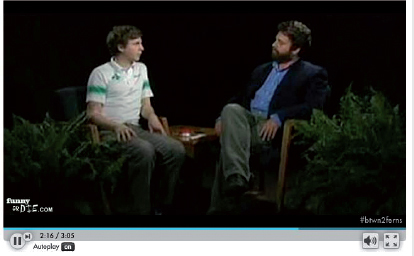Printed Page 248
CONVERGING MEDIA
Case Study

Television Online
During the 2007–2008 Writers Guild of America strike, writer-director Joss Whedon decided to do something more productive than waiting for an agreement between the studios and the guild. Whedon teamed up with two brothers and a sister-in-law to create low-budget but high-quality entertainment for Internet-only distribution. In many ways, the effort was meant to demonstrate that creative people no longer have to cave in to unfair demands by the industry: Broadcast and cable networks are not the only distribution options for televised entertainment content.
The name of the now-legendary production, Dr. Horrible’s Sing-Along Blog, speaks to the emergent power of Web 2.0, in which users interact as creators (or "prosumers") of user-generated content in a virtual community. Neil Patrick Harris stars as Dr. Horrible, whose unrequited love for Penny (played by Felicia Day, herself a Web-production veteran) drives him toward super-villainy. Part musical, part comedy, and part tragedy, Dr. Horrible was originally distributed as a miniseries in three parts. The experiment was a success; the production garnered a Hugo Award, a Golden Globe Award, and the first ever Emmy for a Web series.
A number of other Web series could rightly be considered original online television. Felicia Day has found a loyal following for The Guild, her comedy series about an addicted group of online gamers; and a large number of electronic gaming fans watch installments of a machinima-animated series called Red vs. Blue, now in its ninth season. Another notable Web TV success is Between Two Ferns, a faux talk show hosted by Zach Galifianakis and appearing on the Funny or Die Web site, featuring comic interviews with such prominent media stars as Natalie Portman, Charlize Theron, Ben Stiller, Bruce Willis, and Will Ferrell. Netflix has announced that new episodes of the canceled TV series Arrested Development will premiere on the streaming service exclusively in 2013. Without the scheduling or content restrictions of a typical television channel—or the kind of budgets that require a large audience to stay on the air—these programs have a creative freedom that matches or exceeds many traditional cable channels.
In fact, some media-savvy consumers have canceled their contracts with cable and satellite providers because of the flood of readily available online television programming, which includes these original productions as well as series that air on network and cable TV. Thanks to devices like the Roku and the Apple TV box, as well as wireless-enabled Blu-ray players, viewers are not restricted to laptop or tablet viewing; online television content can now be easily piped onto big-screen television sets.
Such developments in online television production and distribution will, of course, have a dramatic impact on the cable and broadcast industries. Already, low-rated shows have better odds of survival. While some beloved TV series are still canceled too soon, the variety of production and distribution options makes this unfortunate fate far less likely than it was ten or fifteen years earlier. Broadcast network audiences may be down, but convergence allows for new and more varied definitions of success.